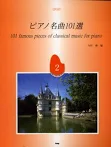Mendelssohn, Felix : Lieder ohne Worte Heft 5 Op.62 MWV U 185, 181, 177, 175, 151, 161
Work Overview
Publication Year:1844
Instrumentation:Piano Solo
Genre:romance
Total Playing Time:14 min 00 sec
Copyright:Public Domain
Commentary (1)
Author : Wada, Mayuko
Last Updated: July 1, 2007
[Open]
Author : Wada, Mayuko
As Wagner called him a "first-rate landscape painter," Mendelssohn demonstrated his talent in depicting scenes and composing programmatic music.
In the form of these "songs without words," or Lieder ohne Worte, Mendelssohn expressed even inner landscapes and emotional portrayals. As these are instrumental pieces with song-like melodies, it is important to make the melodic line stand out clearly and perform them lyrically.
During the period when Mendelssohn was active, the piano became widely popular as a cultural pursuit, especially among bourgeois families. Consequently, many pieces were composed that could be played easily at home, and the Lieder ohne Worte is one such collection.
The Lieder ohne Worte consists of eight collections, each containing six pieces. Only up to the sixth collection was published during Mendelssohn's lifetime. The seventh collection was published in 1851, and the eighth in 1867. When Mendelssohn published the first collection in 1832, he titled it Melodies for the Piano; it was only after the publication of the second collection in 1835 that the title Lieder ohne Worte came into use.
Many pieces have titles, but only a few were given by the composer himself. Indeed, Mendelssohn seems to have disliked the idea that adding titles would limit musical imagination.
Volume 5
Volume 5 of the Lieder ohne Worte is dedicated to Clara Schumann, the wife of his friend Robert Schumann and a distinguished female pianist. The musical content of this volume is also substantial.
- 1. G major, 'May Breezes' / Op. 62, No. 1 (1844)
In the accompaniment figure, the second beat consists of a repetition of the same two notes. - 2. B-flat major, 'Departure' / Op. 62, No. 2 (1843)
- 3. E minor, 'Funeral March' / Op. 62, No. 3 (1843)
Begins with a traditional European funeral rhythm. The march proceeds solemnly and heavily, gradually fading into the distance. - 4. G major, 'Morning Song' / Op. 62, No. 4 (1844)
- 5. A minor, 'Venetian Gondola Song No. 3' / Op. 62, No. 5 (1844)
- 6. A major, 'Spring Song' / Op. 62, No. 6 (1842)
This is the most widely known 'Spring Song.' It has been arranged not only for piano but also for violin and many other solo instruments. The challenge lies in how well one can align the figures indicated by small notes with the melody. It demands delicate technique and sensibility.
Movements (6)
"May breezes" Op.62-1 MWV U 185
Key: G-Dur Total Performance Time: 2 min 30 sec
"The departre" Op.62-2 MWV U 181
Key: B-Dur Total Performance Time: 2 min 00 sec
"Trauermarsch" Op.62-3 MWV U 177
Key: e-moll Total Performance Time: 2 min 30 sec
"Morning song" Op.62-4 MWV U 175
Key: G-Dur Total Performance Time: 2 min 00 sec
"Venezia nisches Gondellied III" Op.62-5 MWV U 151
Key: a-moll Total Performance Time: 2 min 30 sec
"Frühlingslied" Op.62-6 MWV U 161
Key: A-Dur Total Performance Time: 2 min 30 sec
PTNA & Partner Channel Videos(4items)
Sheet MusicView More
Scores List (55)

(株)ヤマハミュージックエンタテインメントホールディングス

(株)全音楽譜出版社

(株)ドレミ楽譜出版社

(株)全音楽譜出版社

(株)春秋社

(株)全音楽譜出版社

(株)全音楽譜出版社

(株)全音楽譜出版社

(株)全音楽譜出版社

(株)ヤマハミュージックエンタテインメントホールディングス

(株)ドレミ楽譜出版社

(株)ドレミ楽譜出版社

(株)ドレミ楽譜出版社

KMP(ケイ・エム・ピー) ケイエムピー

(株)音楽之友社

KMP(ケイ・エム・ピー) ケイエムピー

(株)ヤマハミュージックエンタテインメントホールディングス

(株)ドレミ楽譜出版社

ミュージックランド

(株)リットーミュージック

(株)学研プラス

(株)オンキョウパブリッシュ〇

(株)レッスンの友社

(株)ドレミ楽譜出版社

(株)ドレミ楽譜出版社

(株)オンキョウパブリッシュ〇

(株)ドレミ楽譜出版社

(株)シンコーミュージックエンタテイメント

(株)ドレミ楽譜出版社

(株)ドレミ楽譜出版社

ハンナ(ショパン)

ハンナ(ショパン)

ハンナ(ショパン)

ハンナ(ショパン)

ハンナ(ショパン)

(株)ヤマハミュージックエンタテインメントホールディングス

(株)ヤマハミュージックエンタテインメントホールディングス

ミュージックランド

(株)ドレミ楽譜出版社

(株)全音楽譜出版社

KMP(ケイ・エム・ピー) ケイエムピー

ミュージックランド

(株)ドレミ楽譜出版社

(株)ドレミ楽譜出版社

ヘンレ社(ヤマハ)

(株)音楽之友社

(株)ヤマハミュージックエンタテインメントホールディングス

(株)学研プラス

Neil A. Kjos Music Company

Neil A. Kjos Music Company

Breitkopf & Hartel

Peters

ミュッセ









